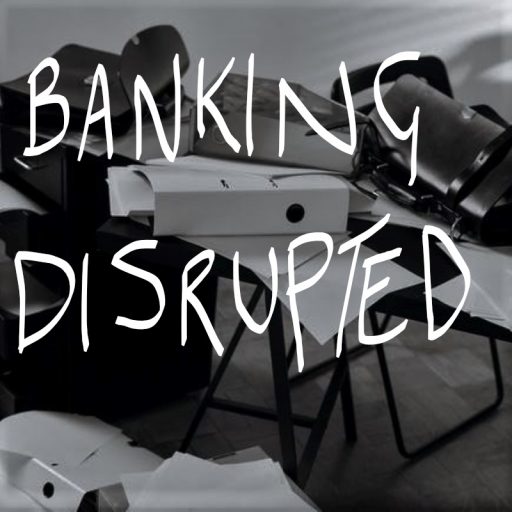This week I will be interviewing Carlos Salta, the Global Head of Banking and Diversified Finance for Capgemini, to discuss how core banking transformation is being reimagined in light of COVID, and the broader impacts of the pandemic. Carlos has worked with a significant number of tier 1 banks and financial services providers across the globe. He has been instrumental in helping many banks transform their banking models, across technology, operations, and innovation. He is an industry veteran with over 20 years’ experience, driving value aligned change across the banking and financial services sector.
It has been one year since COVID took hold, what impact has the pandemic had on Banking and UK Banks?
COVID has presented banks with significant operational and financial challenges and risks most of which have been addressed and some are still being addressed.
The immediate operational challenge was being able to support customers through remote channels only as opposed to the traditional branch network. This was compounded by the challenge of enabling the middle office and back office staff to work remotely during lockdown periods.
Overlay on this government mandated support which required the CBILS loans (and solutions) to be rolled out in weeks (not months), and you have a year which has probably seen more business change / impact to UK banks than the previous 3 – 5 years combined.
Financially, one of the challenges which banks faced as a result of COVID was a drop in revenues associated with reduced economic activity – McKinsey’s annual banking report for 2020 estimates banking revenue dropped by 14%. This was further exacerbated by the increase in loss provisions for defaults and bad debt. The combined effect being to reduce bank profits by up to 70%. It is estimated that it could take banks 2 – 4 years to return 2019 revenue/profitability levels.
Is it all bad news or is there any silver lining that can be found in the storm cloud that is COVID?
If necessity is the mother of invention, then certainly it can be argued that crisis is the most effective driver of change. COVID has driven a rapid and irreversible increase in the use of digital channels and digitisation across banks.
This was mandated not only by the social distancing and lockdown requirements but has also been supported by a meaningful shift in customer behaviours and attitudes towards digital channels. Furthermore, this change is here to stay. Just like it is somewhat unlikely that everyone will return to office work 5 days a week after the end of COVID, customers are unlikely to turn their back on the digital channels. They have gotten used to a virtual world and are much more comfortable with virtual interactions. They appreciate the convenience and flexibility which digital channels provide.
This is good news for banks as it provides them with a method to better serve customers at the same time as reducing the cost to serve. Equally banks now have more options in terms of how they design and implement their customer service model. Options including adopting hybrid service models with branches being optimised for high touch, high value conversations whilst using low-touch, automated servicing in the digital channels for commodity services. This could also present an opportunity to optimise branches dependent on demographics, products and services required.
Another cost advantage coming out of the COVID crisis is the reduction in the use of cash and the increase in cards payments (contactless cards). The crisis quickly saw an increase in the contactless payment limit from £30 to £45. There is currently a FCA Consultation underway to increase this further to £100. All of this is helping to move further towards a cashless economy which presents further costs savings opportunities across the board.
Finally, with views of potential recovery from COVID beginning to take hold, banks are beginning to re-assess their loss provisions and indications are that the initial impact may not be as severe as previously believed. Recovery in economic activity will have a positive impact on banking revenues which can be further improved by banks looking to provide business lending as part of the rebuilding exercise which naturally follows.
All in all, COVID may just have provided banks with the ideal opportunity and driver to adjust their business model and services to make them fit for the future.
What does this mean for banks as they look forwards to the next 2 – 3 years? What are the technologies and solutions that they should focus on?
The climate despite the challenges we have seen, also represents a real opportunity for banks and financial services provider to redefine themselves as digital, and more consumer centric players. There are several things that will become key areas of focus, as players look to improve the ways in which they participate in the market, namely:
- Continued digitisation of processes with a focus on extending beyond channel layer and going digital all the way to the core. The emphasis will be on real time straight through processing front to back across the enterprise. This will create simpler more cost-effective processes and drive a better customer experience
- Increased focus on flexibility and agility by driving open banking solutions and together with fintech ecosystems to improve customer proposition. This requires banks to API enable their core services and capabilities in order to serve two agendas: the ability to “buy/partner” innovation in and not have to build it, and lower the cost of change by leveraging a more agile architecture
- Leverage cloud to drive costs savings, agility, scalability, and reachability. The cloud strategy is vital to lowering Total Cost of Ownership (TCO) over time, but there also needs to be a way of justifying the initial cost outlay through working with the hyper-scalers and partners to establish growth opportunities simultaneously
- Focus on data and data driven insights. Whether organisations are looking at driving better marketing awareness, faster On-boarding/KYC, enhanced risk scoring, rapid underwriting, or just simply helping a customer or business understand their spending patterns or cashflow, data is front and centre. A broader data strategy needs to come into play as more and more customers engage remotely, and the use of real-time data to inform servicing queries can play a significant role in keeping costs low, as well as customers happy!
To find more insights into trends that we seeing across the market refer to Capgemini’s World Retail Banking Report 2021, where you can learn more about the topics Carlos has raised. It goes without saying never have we experienced such a platform for change and innovation….as Carlos rightly points out “necessity is the mother of all learning”




